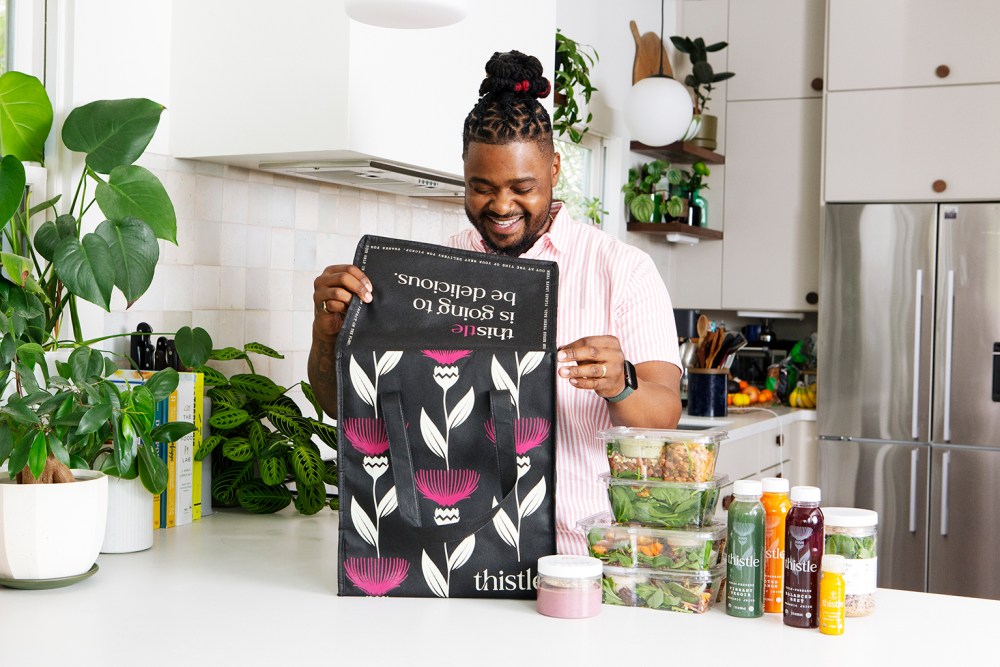This industry perspective is by Justine Allan, Executive Director of Strategic Business Development at Pearlfisher.
Not too long ago, taste was everything. Snacks earned loyalty, not because of their salt content or nutritional value—but because they delivered on flavor, pure and simple. It’s what kept people coming back, even if the health credentials were an afterthought.
But that was before—before economic pressures caused shoppers to tighten their purse strings and eat more meals at home. Before GLP-1 drugs offered a more attainable way to achieve a “healthy lifestyle.” And before every purchase was expected to pull double (or triple) duty.
Welcome to the new economy of functional food design—where food is more than food. It’s an energy supplement, a vitamin delivery system, and a focus-enhancer, all rolled into one.
Rather than turning to Red Bull for their caffeine fix, consumers are reaching for brands like HALO Hydration, which blends natural caffeine with adaptogens for a more balanced boost. And instead of grabbing a bag of Doritos, they’re opting for Wilde’s Chips—snackable formats that deliver on flavor while packing in protein, fiber, or functional benefits.
In short, the CPG and wellness industries have collided. Everyday products are being reimagined, with added functionality as the new secret ingredient. And with annual wellness spend in the U.S. now exceeding $500 billion (growing at 4-5% each year), brands can’t afford to ignore this trend.
Winning in this space means striking the right balance between multi-benefit messaging and brand design.
Conventional Strategies are Past Their Sell-By Date
While this latest shift impacts all players in the CPG world, legacy brands are feeling the heat the most. These are the comfort foods of the middle aisle—trying to coast on nostalgia, but drifting ever closer to irrelevance.
Just look at what’s flying off the shelves. Today’s best-selling products are bursting with natural, vibrant ingredients—think amaranth, turmeric, ginger—that bring more color, more vegetables, and more vitality to the table. These ingredients do more than tell a compelling visual story; they signal functional benefits that today’s consumers actively seek out, from anti-inflammatory properties to gut health and sustained energy.
The fact is, shoppers want their food to work harder for them. And they’re not afraid to abandon previous passions. Nowhere is this more apparent than in the alt-milk category—while it starts to curdle, traditional dairy is experiencing a resurgence among consumers wanting “proper fats.” In 2024, the U.S. dairy industry recorded only its second year-over-year sales increase since the 1970s, with an additional 40 million gallons sold.
Ingredients such as protein may be trending, but that doesn’t mean brands can jump on the bandwagon and expect instant success. To avoid becoming another flash in the pan, brands must strike a balance between communicating function and maintaining brand identity.
The Authenticity Advantage
Whether or not your brand should prioritize functionality comes down to one question: Do your consumers want this from your brand? Overhauling your products only works if you can do so authentically. Abandon your brand’s tone of voice and identity, and trust can erode quickly.
If only PepsiCo had followed this line of thinking before launching its Prebiotic Cola. Marketed as an attempt to “meet the changing consumer preferences,” the product lacked any meaningful fizz. It felt more like trend-chasing than a natural brand extension. Contrast that with Poppi—the prebiotic brand that PepsiCo had already acquired in a $2 billion deal—which had followed an intentional, benefit-led strategy from the beginning. It didn’t follow the trend; by leading from the front, it built credibility.
Once you’ve decided on this course of action, it’s important you don’t become the NASCAR of claims and benefits—or in other words, plaster functional messaging across your packaging. There’s such a thing as “too much information.” To avoid confusing your audience, prioritize one clear benefit based on where they are on their journey.
Of course, you may feel that your current products are perfect as they are, and that scaling to adjacent categories is the best way to tap into the wellness market. However, this hinges on developing a distinct proposition—and then extending it, rather than breaking it.
This was the challenge that David Protein faced with the launch of its frozen Pacific Cod range. While high-protein, low-calorie is a compelling value proposition, it raises an important question: Is that enough to build long-term brand loyalty? The move also blurred the brand’s original promise—that its bars were the most efficient and enjoyable way to boost protein intake. For a brand still in its first year, shifting too far from that core message risked confusing consumers and diluting its positioning.
Compare that to Annie’s Mac and Cheese. Its founder set out to build a “socially conscious” brand, a mission that still holds true 36 years later. Instead of focusing on short-term wins, Annie’s has undergone a long-term transformation into a better-for-you family-food brand—a lesson in patience, and testament to how a values-led strategy can provide a foundation from which to broaden your horizons.
Down to Earth, Built to Last
As wellness and CPG continue to converge, and more players emerge as champions of innovation, brands face a clear choice—spice things up and embrace functionality, or risk being left behind. That being said, not all that glitters is gold, and not all trends are right for your brand. The brands that stay true to their identity and tweak their strategy to reflect what their consumers truly want are the brands that will thrive in this new landscape.
Justine Allan is Executive Director of Strategic Business Development at Pearlfisher. She has held senior roles at agencies including Design Bridge, Moving Brands, and Turner Duckworth, and has partnered with global organizations such as Unilever, Diageo, PepsiCo, L’Oréal, and HP.
Images of Oca, Thistle, and GoMacro KiDS courtesy of Pearlfisher.
The post Benefit vs. Brand: The New Economy of Functional Food Design appeared first on PRINT Magazine.

